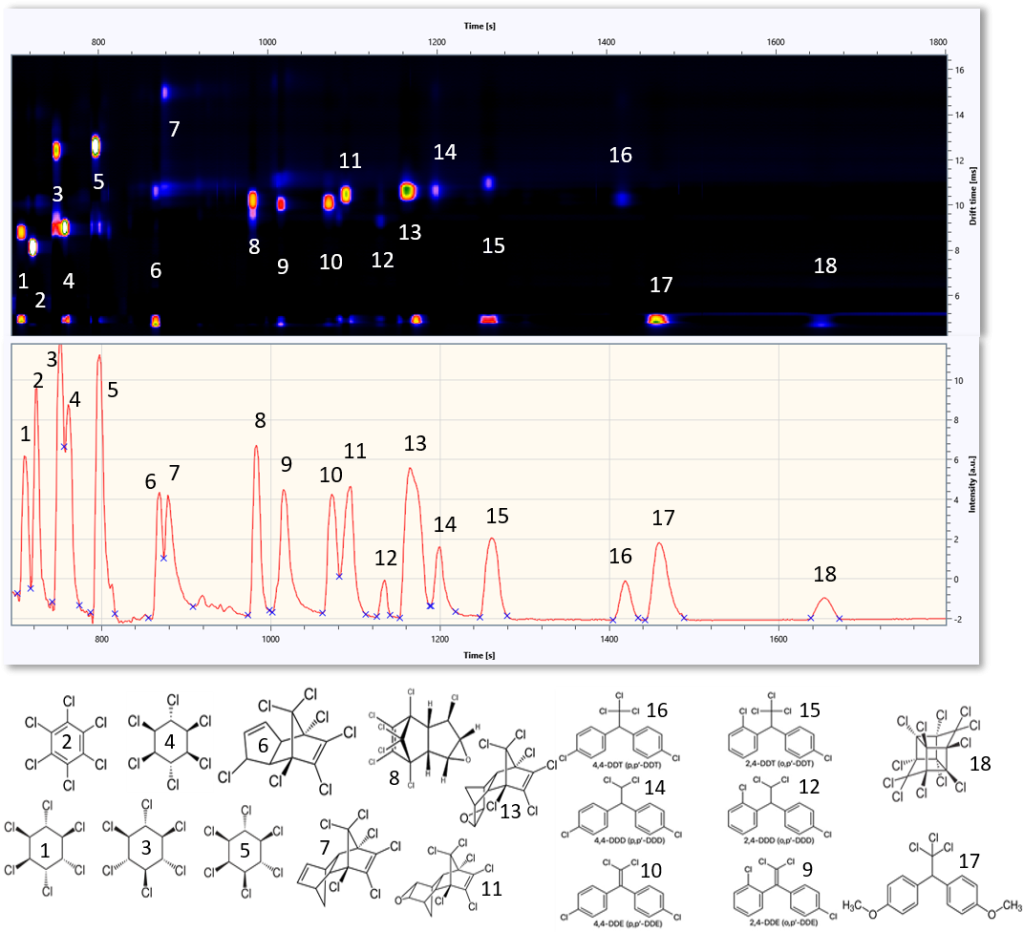Innovative Detection Technology
Als spezialisiertes Unternehmen mit mehr als 25 Jahren Erfahrung auf dem Gebiet der Gasanalytik, bieten wir Ihnen zerifizierte Gasmesssysteme und Sensoren für unterschiedliche Anwendungen an.
Aktuelle Themen
GC-DTIMS 2030:
Qualitative und quantitative Analyse von schwerflüchtigen chlorhaltigen Pestiziden mittels GC-IMS


Das innovative GC-DTIMS 2030 ermöglicht den schnellen und sicheren Nachweis von schwerflüchtigen chlorhaltigen Pestiziden. Die analytische Leistungs-fähigkeit wird anhand eines 18er Wirkstoffgemisches demonstriert. In der nebenstehenden Abbildung ist die eindeutige Identifizierung der Einzelkomponenten des Wirkstoffgemischs dargestellt. Jede Substanz kann anhand ihrer spezifischen Retentionszeit im Chromatogramm und ihrer Driftzeiten im Spektrum sicher charakterisiert werden. Von besoderer Bedeutung sind dabei Pentachlorphenol (PCP), Lindan (HCH) und die verschiedenen DDT-Isomere, welche bei-spielsweise für die Altholzanalytik relevant sind.
Neueste Veröffentlichungen:
A B S T R A C T
Qualitative and quantitative on-site detection methods for wood preservatives are of high value for the recycling industry and the occupational health and safety. Wood preservatives revealed as toxic to human and environment after decades of use. For the detection of contaminated wood and for processing of matured timber to particle boards a versatile detection method is needed. Especially historical wooden objects were treated with preservatives like pentachlorophenol, lindane or dichlorodiphenyltrichloroethane. This requires a non-destructive on-site detection method, that does not require specialized personnel. In this publication two methods are presented utilizing headspace sampling by solid-phase microextraction, subsequent separation using gas chromatography and detection by a drift tube ion mobility spectrometer (SPME–HS–GC-DTIMS). One method enables the quantitative detection of pentachlorophenol in wood flour and wood chips as they are used in wood processing industries. A limit of detection of 0.1 mg/kg was achieved using DIN 32645, which can be even more lowered. The second method enables non-destructive detection of pentachlorophenol, lindane, dichlorodiphenyltrichloroethane and other preservatives in wooden objects. Therefore, samples were prepared, which show a significantly lower concentration than typical treated objects, and used next to real samples for method validation. With the method contamination of the real samples and of the prepared samples of low concentration were proven.

